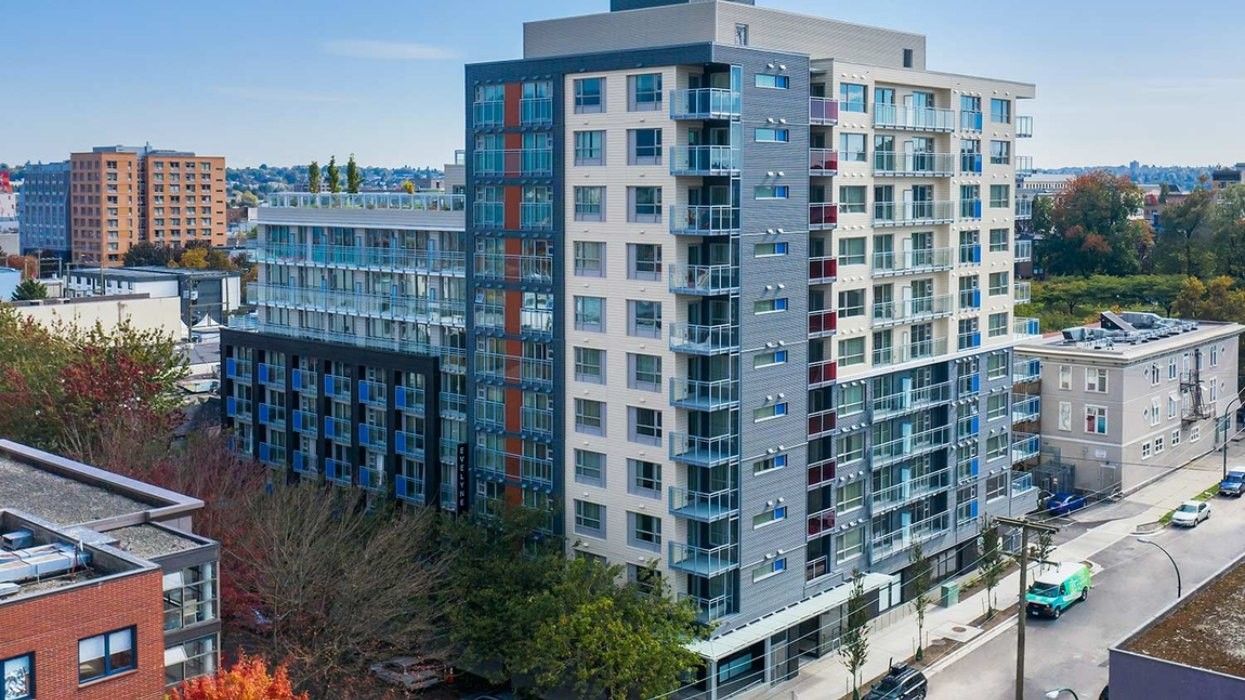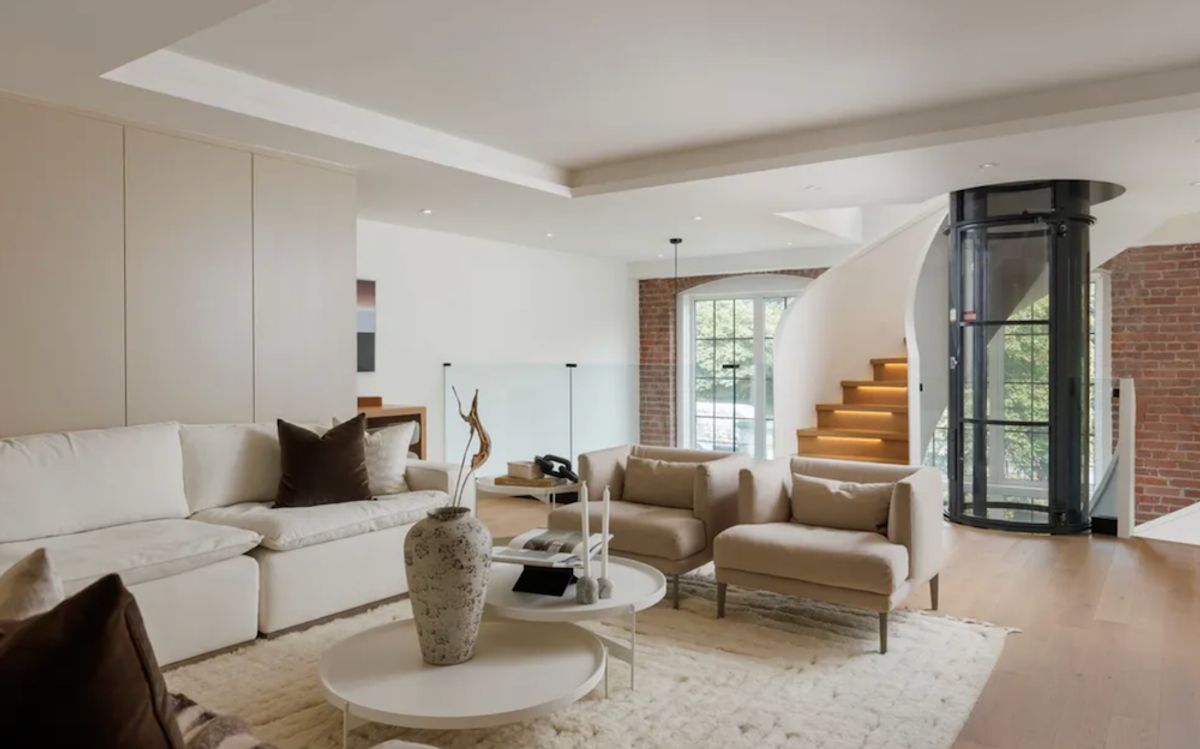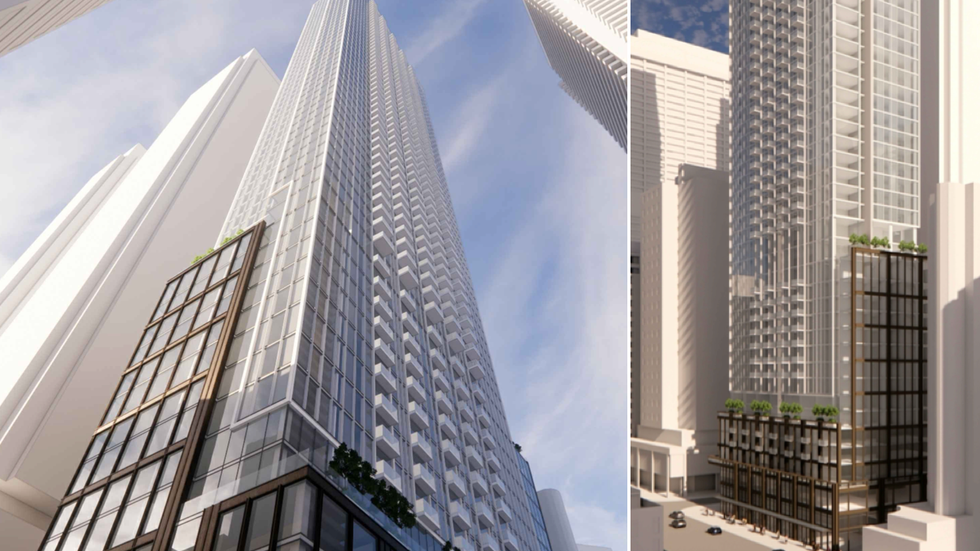Fresh off of a long August break, the City of Vancouver is returning to action with a new initiative focused on social housing, the City announced in a press release this week.
The new initiative aims to expedite the delivery of social housing by eliminating the need for individual rezonings — by pre-zoning — and allowing applicants to proceed directly to the development permit stage, cutting significant amounts of time from project timelines, which also reduces project costs.
The new policy would apply differently to different neighbourhood types, with social housing buildings up to six storeys allowed in Village areas and buildings up to 18 storeys in Neighbourhood Centres.
All of the areas this new policy would apply to are located outside of the West End, downtown core, and Broadway Corridor, with the areas that allow for up to 18 storeys generally along both sides of Kingsway and south of 16th Avenue.
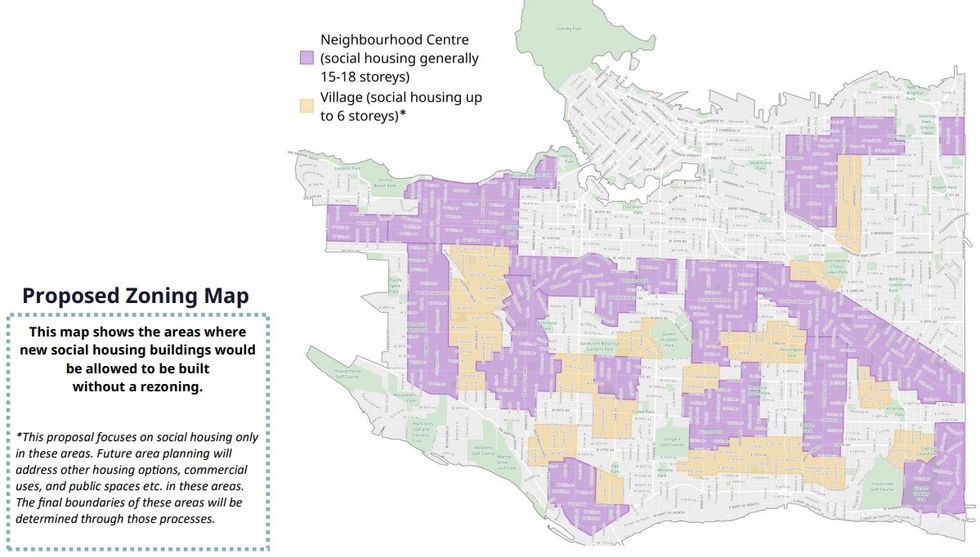
According to the City, social housing projects that would be allowed under this new proposed policy must meet the following criteria:
- The housing is secured as social housing for the life of the building through a legal agreement with the City;
- Owned by a non-profit corporation, a nonprofit co-operative association, or by a level of government; and
- At least 30% of the units are rented to households with incomes below the Provincial "Housing Income Limits."
In addition to the pre-zoning and height regulations, the City has also proposed a set of simplified design requirements for these kind of projects, which the City says is intended to "improve clarity for applicants, reduce the need for variances due to unique site conditions, allow for design flexibility and different types of buildings, and increase predictability."
For projects up to six storeys, the City is recommending the typical box-like building, a similar-but-expanded type of building for corner sites, or a courtyard-style building on corner sites. For towers, the City is then recommending either a tower with a podium, a tower with a podium and enhanced open space on the ground level of larger sites, or a tower with no podium.

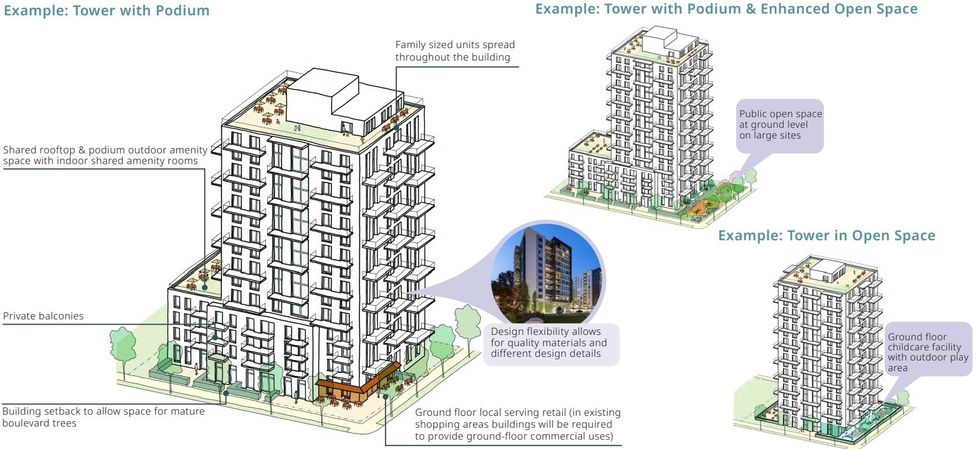
In any of the cases, the buildings may include retail, commercial space, or childcare facilities on the ground level, with towers also expected to have some public open space on the ground level.
Of note, however, is that the City says spot rezonings may be required in certain scenarios, such as when "a site is oddly shaped, lacks a lane, or requires a market housing component for the project to be viable"
"Offering a rezoning option alongside the option to build directly allows City Council to review and consider projects with unique characteristics on a case-by-case basis," the City says.
This new proposed social housing initiative is a product of the Vancouver Plan, which was approved in July 2022 and included directions regarding enabling and increasing the supply of social housing and supportive housing. The City is also currently working on turning the Vancouver Plan into the Vancouver Official Development Plan (ODP) to further implement the plan. Other actions the City has recently taken towards this end include tidying up its policy framework and updating its housing targets.
The new social housing initiative is currently at the public engagement stage, with in-person information sessions currently scheduled between October 1 and October 8. Following public engagement, City staff will then come up with a draft of the regulations before presenting a final report to Council in Q2 2025.
While this new initiative will likely make an impact on approval times, whether or not approved projects can get to the construction stage is a whole other story, and it's one that is largely out of the City's control.
- City of Vancouver Unveils First-Ever Seniors Housing Strategy, Rezoning Policy ›
- Vancouver Outlines Housing Requirements In New TOA Rezoning Policy ›
- Vancouver Relaxes View Cone Policy, Sparking Controversy ›
- Vancouver Falls Short Of Provincial Housing Completions Target After Year One ›
- Multi-Tower Project With 847 Social Housing Units Proposed For South Vancouver ›
- Portions Of Broadway And Cambie Corridors To Be Pre-Zoned For More Density ›
